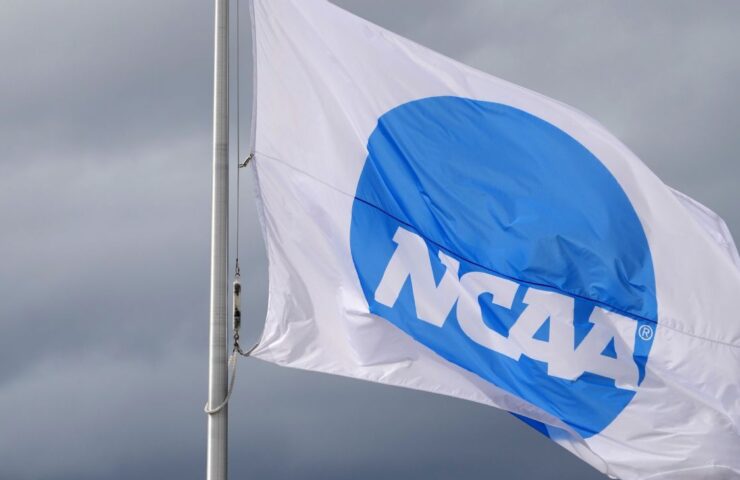
Survey: Male professional athletes unsure of Title IX process
About 41 percent of male college professional athletes stated in a study that they had been told about an event of sexual attack or domestic violence, but that they were largely unaware of their school’s treatments on what to do next, and numerous mistrusted school and law enforcement authorities to handle an examination, according to a research study launched Tuesday.The research study by the sexual assault avoidance group It’s On Us surveyed 710 male athletes from nine schools, ranging from teams at Division I schools to club groups at smaller colleges. Clemson University was the only school consisted of from a Power Five conference.”The majority of the athletes It’s On Us
talked to had minimal awareness of their institution’s policies, procedures, and resources for survivors, and lots of did not understand who their Title IX Coordinator was,”the study states.” This lack of awareness was a barrier for professional athletes who preferred more direction and resources when experiencing a disclosure.”Editor’s Picks
Athletes in the research study likewise stated some professional athletes were “hesitant to recommend that a survivor report to the cops or their organization. They expressed issue that the cash or status of the accused trainee would impact how the report of sexual assault would be dealt with.”
Universities, federal governments and not-for-profit companies have actually invested countless dollars on campus sexual attack avoidance programs, especially following high-profile cases of alleged sexual violence involving professional athletes at schools like Baylor, Florida State and Michigan State.The study mentions that male professional athletes discovered existing campus sexual assault avoidance programs to be”uninteresting, not reflective of their campus culture [and] unengaging. “Training programs are often provided online, which participants said was “ineffective since the athletes could easily click through them without taking note of the content.” It’s On United States concentrated on male professional athletes for the study due to the fact that the nonprofit group has formerly discovered them to be challenging to reach through other school shows, and since research studies have actually discovered that male athletes are most likely than non-athlete students to be connected with sexual violence.While the percent of male professional athletes that have been told about an occurrence is on par with overall
male trainees– about 47 percent according to a 2020 federally financed research study– It’s On United States Executive Director Tracey Vitchers said reaching male professional athletes was a concern since they have great influence on their campuses.”Professional athletes are huge motorists of campus culture, “Vitchers said.”We felt this was a special opportunity for athletes to be chauffeurs of positive change.”It’s On Us surveyed the athletes through hour-long focus groups mainly made up of members of the same team, however sometimes consisting of professional athletes from more than one team. The study was funded by the NFL, which has actually been giving grant money to It’s On United States considering that 2018, spokeswoman Olivia Solow-Niederman composed in an e-mail. It’s On Us began in 2014 as part of a recommendation from the White House Job Force to Avoid Sexual Attack under President Barack Obama. The group runs on more than 300 college campuses in the U.S.Vitchers said existing sexual attack prevention programs often presume that students have a standard knowledge of sexual health and wellbeing, when lots of merely do not. According to the survey, about half of the individuals reported getting some official sex education during their K-12 school years, and”almost none of the professional athletes got or kept in mind receiving an official education on consent.”About 21 percent stated they first found out about sex through porn.Athletes in the focus groups wondered about how to manage an unhealthy relationship, how to support survivors and how to step in to prevent sexual violence, according to the research study.” They have a major part of what’s needed, which is that communication
level, that relationship level. A great deal of these groups see each other as bros, “said Kyle Richard, associate director of men’s engagement and special projects for It’s On United States and a former college football player.” They’ve been active onlookers in other methods, whether it’s the weight room, making sure professional athletes, if they’re doing a squat are they getting low enough? They’re used to calling each other out.”Vitchers said male professional athletes often approach sexual violence avoidance training with their guard up since they feel there is an understanding that they are always the “problem, “or the training in is action to an advertised incident.The research study suggests schools train trainees on what to do, instead of what not
to do:”For example, it is unhelpful to inform boys’do not rape’when most can not picture themselves ever doing so.”Rather, Vitchers stated, the mentor ought to be” here’s how to have healthy interaction, here’s how to deescalate a circumstance, here’s how to have a conversation with a colleague who is headed in the incorrect instructions. “
